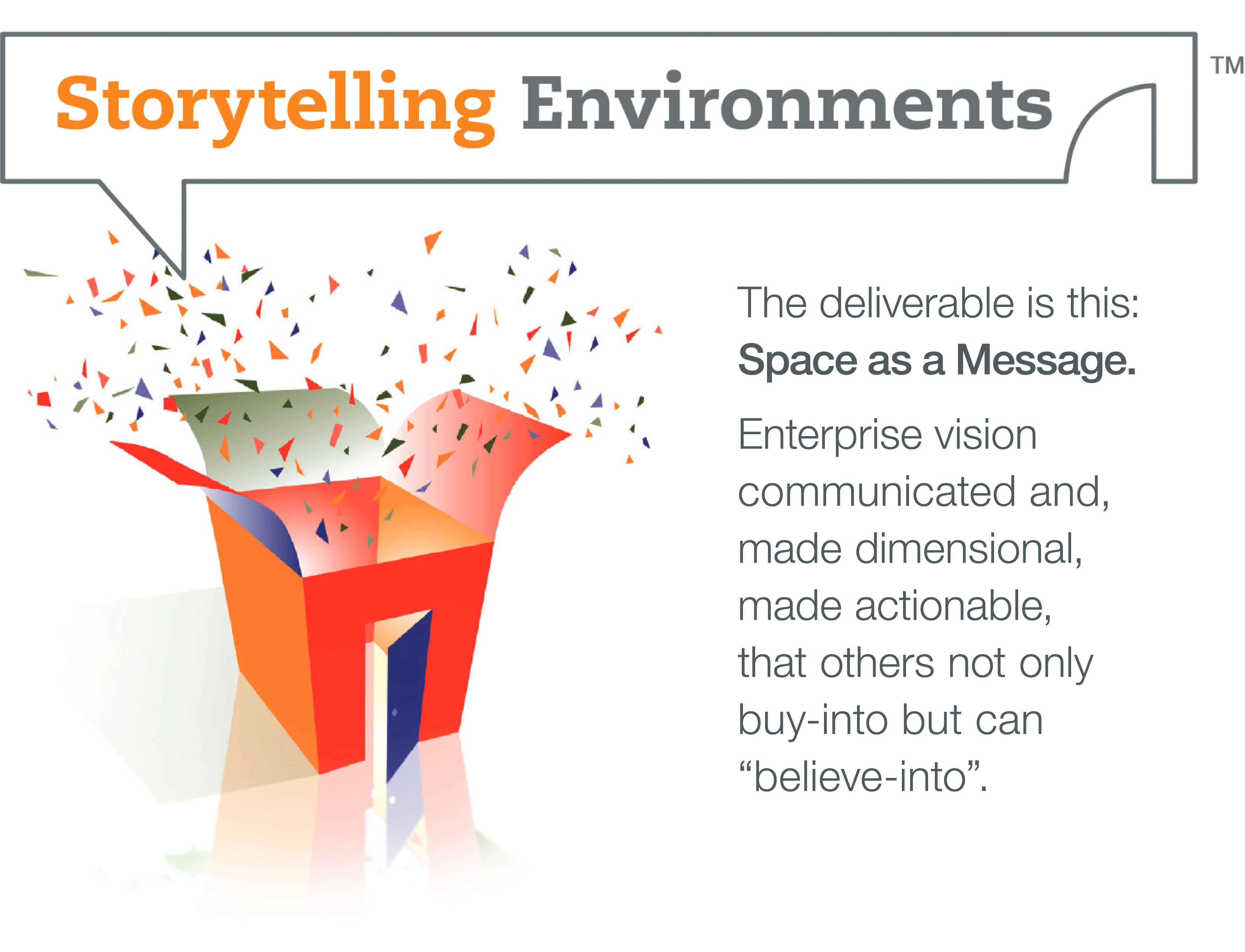
Storytelling Environments could also be described as Narrative Architecture, where the evolution of workplace continues, approaching the equivalent of branded stage sets designed for the theatre of commerce.
Now playing: media rich displays of managed media content pumped over private networks and distributed as part of a strategy tied to just-in-time communications regarding metrics, milestones and markets. And now playing-back: comments and ratings, edits and editorials, rants and dislikes…everyone can connect-in and leave their thumbprint on each and every message. This electronic ecosystem allows anyone (everyone) to be reporter, monitor, critic, pundit, publisher, content creator, content augmentor. Messaging masterplans will strive to counter media overload, information anxiety, and attention deficit. Currency, relevancy and authenticity will become the magnetism, the pull surrounding your messages.
But this evolution applies not only to messages, these attributes will be required of environments. Placemaking will include spaces designed for commenting, posting, liking, sharing, forwarding. And the dimensional space must join in the dialogue — it will need to interact, react, tally and exchange with those experiencing the architecture. In some instances environments may morph to a more optimal storyline, based on collected social commentary. The overarching goal for place will be a timely relevance.
Successful enterprise design will create environments that provide users and occupants the support they need to be the people and teams their organizational culture has advocated and collectively taught them to respect and emulate. Architecture activated by and reflective of belief systems.
More personal perspective regarding.
